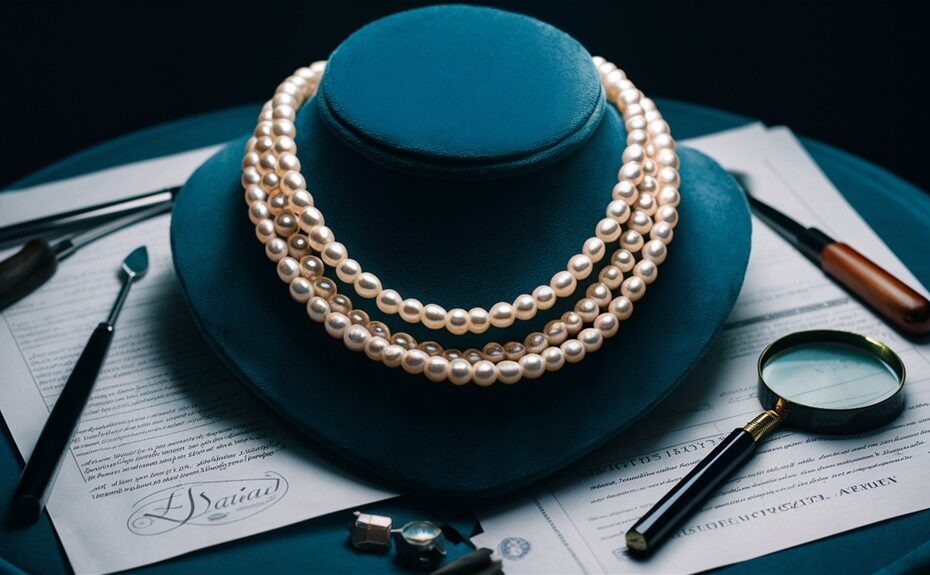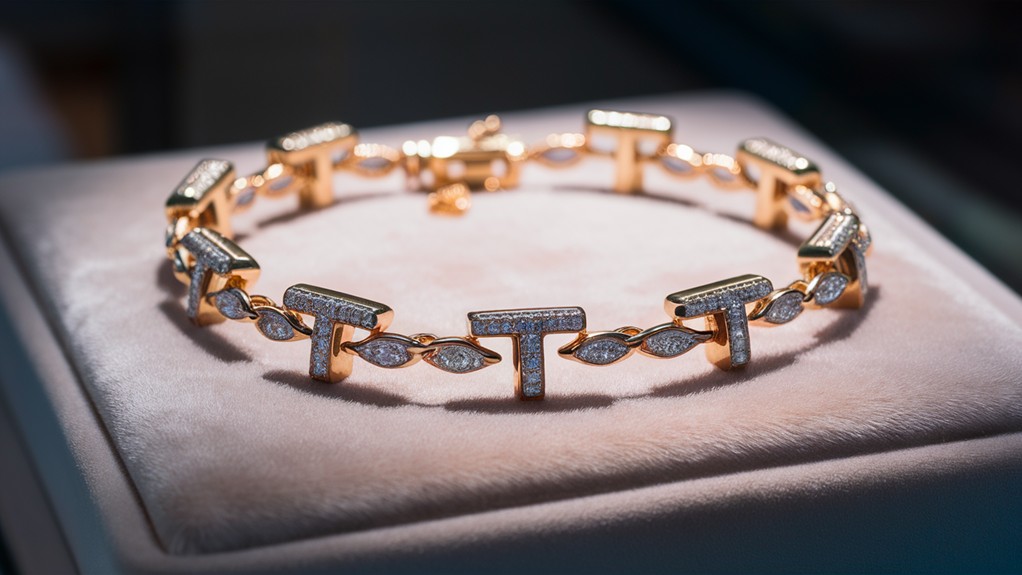When you're looking to sell your natural pearls, you're stepping into a world where knowledge is power. You'll need to navigate the complexities of pearl quality, market trends, and buyer preferences to enhance your gems' value. Whether you're considering gem shows, online marketplaces, or prestigious auction houses, each avenue presents unique opportunities and challenges. By understanding the intricacies of appraisals, certifications, and strategic presentation, you'll be better equipped to make informed decisions. But before you plunge into it, there's a vital aspect of pearl selling that many overlook – one that could greatly impact your success in this lustrous market.
Our Highlighted Points
- Obtain professional appraisals and GIA certification to establish credibility and attract serious buyers.
- Target high-end gem shows, specialized online marketplaces, and reputable auction houses for maximum exposure.
- Showcase pearls with high-quality photography, detailed documentation, and compelling narratives to increase perceived value.
- Time sales to coincide with peak demand periods, such as luxury auctions and holiday seasons.
- Leverage expert networking and thorough market research to inform negotiation strategies and secure optimal prices.
Understanding Pearl Quality Factors

Pearls, nature's organic gems, are valued based on seven key factors: shape, size, color, luster, surface quality, nacre quality, and matching.
To enhance the value of your natural or cultured pearls, you'll need to understand how these factors influence their worth.
Shape: The most valuable pearls are perfectly round, though baroque shapes can likewise command high prices if unique.
Size: Larger pearls are generally more expensive, with South Sea varieties reaching up to 17.0 mm and potentially exceeding $100,000 in retail value.
Color: The body color, overtone, and orient contribute substantially to a pearl's value. Natural colors are typically more prized than artificially dyed ones.
Luster: High luster pearls, which reflect light intensely, are more valuable.
Surface quality: Blemish-free pearls are extremely rare and highly prized. Even minor imperfections can reduce value.
Nacre quality: Thicker nacre generally indicates higher quality and durability.
Matching: For strands or sets, uniformity in all factors is essential.
When assessing your pearls, consider these factors carefully.
Appraisal and Certification Process
When selling pearls, obtaining a professional appraisal and certification is crucial to establish their true value. A reputable source like Emeralds International can provide a credible market value based on factors such as color depth, flame quality, and dimensions.
Certification from recognized organizations like GIA is often required by auction houses and improves a pearl's marketability by confirming its authenticity and quality.
To optimize your pearl's value during the appraisal and certification process:
- Gather visual documentation, including high-quality images of your pearls, to assist appraisers and potential buyers in assessing their characteristics and condition.
- Collect and maintain any available provenance or documentation of origin, as this information can greatly increase your pearl's market value.
- Keep detailed records of any modifications made to the pearl, as alterations can impact its appraisal and perceived value in the resale market.
Top Marketplaces for Natural Pearls
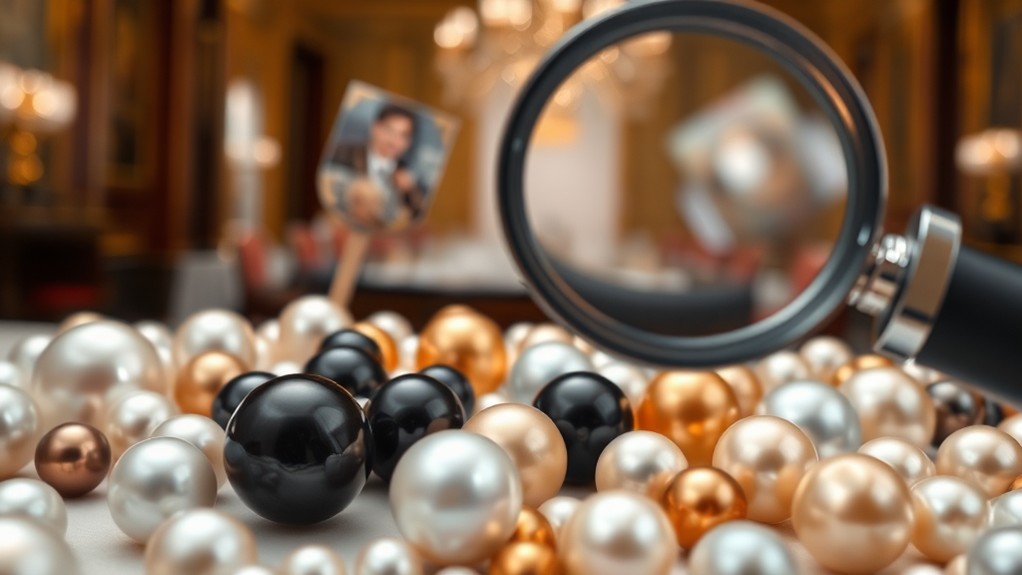
Having established the importance of appraisal and certification, let's investigate the best places to sell your natural pearls. To optimize value and selling opportunities, consider these top marketplaces:
- Gem Shows:
- Tucson and Hong Kong gem shows offer prime venues for evaluating and pricing natural pearls.
- Diverse range of buyers and dealers creates competitive pricing environments.
- Online Marketplaces:
- Specialized pearl retailers like American Pearl and Pearl Paradise provide broader access to global audiences.
- Competitive pricing and convenience for sellers.
- Auction Houses:
- Can elevate prices up through competitive bidding.
- Better suited for finished pieces rather than raw pearl lots.
- Consider fees and potential low success rates for natural pearls.
- Direct Dealer Transactions:
- May yield lower offers compared to auction houses or gem shows.
- Networking within pearl communities can lead to valuable connections and insights.
When choosing a marketplace, consider factors such as audience reach, fees, and your pearls' characteristics.
Gem shows and online marketplaces often provide the best balance of competitive pricing and selling opportunities for natural pearls.
Always research and compare options to confirm you're getting optimal value for your gems.
Auction Houses vs. Private Sales
After exploring different marketplaces, it's vital to weigh the pros and cons of auction houses versus private sales for your pearls.
Auction houses often present challenges for selling raw pearl lots due to high fees and minimum bid requirements. Moreover, their acceptance criteria typically favor finished jewelry over loose pearls, limiting your selling options. Provenance and GIA certification are frequently required, adding complexity to the process.
Private sales, in contrast, can sometimes yield better offers than auctions. When dealing directly with dealers or collectors, you may have more flexibility in negotiation and potentially enhance the value of your pearls. However, careful research is significant to guarantee a fair price.
Consider these factors when deciding between auction houses and private sales:
- Acceptance criteria: Auction houses prefer finished jewelry, while private sales allow for more flexibility with loose pearls.
- Fees and requirements: Auction houses often have high fees and strict requirements, whereas private sales may have lower associated costs.
- Negotiation potential: Private sales offer more room for negotiation, potentially leading to better offers for your pearls.
Enhancing Pearl Presentation for Buyers
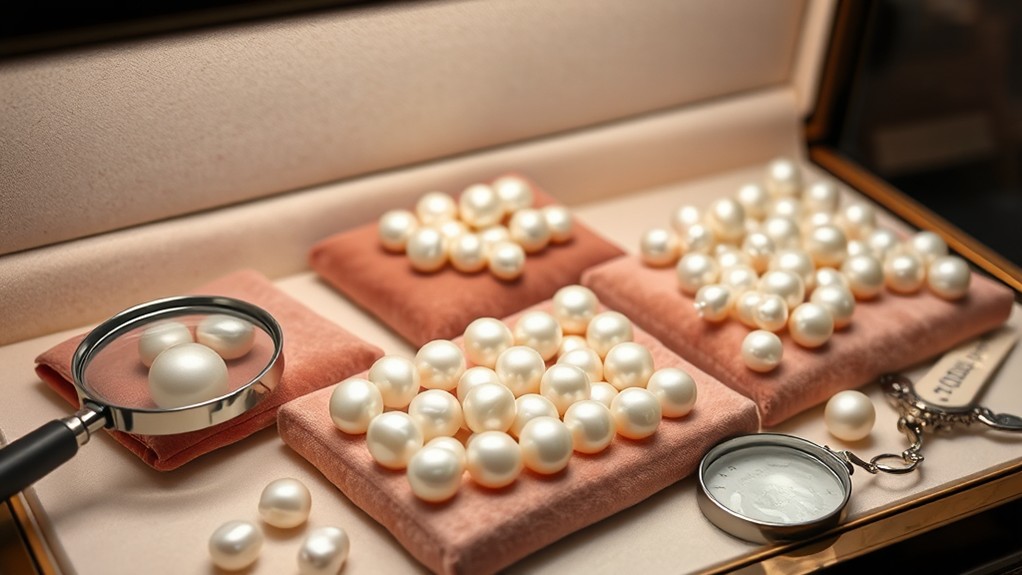
The art of presenting pearls can make or break your sale. To optimize your chances of success, focus on high-quality photography that showcases the pearls' luster, color, and unique characteristics. Capture images that highlight their beauty from different angles, ensuring potential buyers can appreciate their true value.
Present your pearls in elegant settings, such as custom-designed jewelry boxes or professional display cases. This approach increases perceived value and desirability, making your gems more attractive to discerning buyers.
Provide detailed documentation, including:
- Origin information
- Grading reports
- Certifications
These elements instill buyer confidence and justify higher pricing. Create a compelling narrative by highlighting the pearls' history and unique features, emphasizing their rarity or specific characteristics that set them apart.
Leverage social media platforms and online marketplaces to reach a broader audience. Use polished visuals and engaging descriptions to engage potential buyers and showcase your pearls' beauty.
Timing the Market for Sales
Savvy pearl sellers understand that timing is crucial for maximizing profits. The pearl market's cyclical nature offers strategic opportunities for those who know when to act.
Peak demand typically aligns with holiday seasons and special occasions, making these periods ideal for selling. Furthermore, luxury auctions in January and June, which coincide with major jewelry showcases, often see spikes in pearl prices.
To capitalize on market trends and optimize your timing for sales:
- Monitor gem shows in Tucson and Hong Kong for insights into buyer interest and current market dynamics.
- Target seasonal events like Valentine's Day and Mother's Day, when consumer spending on pearl jewelry tends to increase.
- Stay informed about fashion trends and celebrity endorsements, as high-profile appearances can greatly influence pearl values.
Negotiation Strategies for Sellers
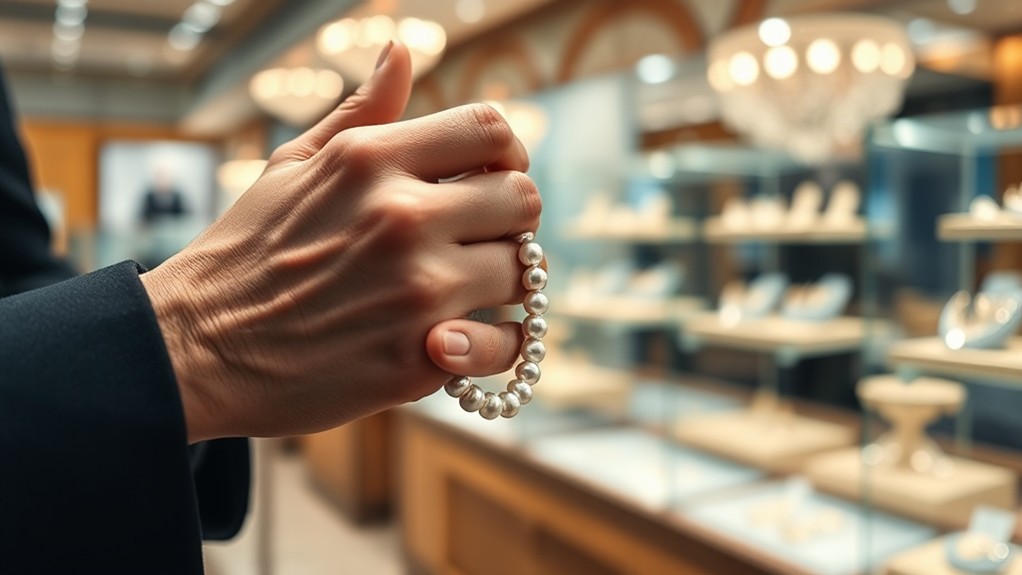
Successful pearl sellers employ a range of negotiation strategies to secure the best possible deals. To optimize the value of natural pearls, start by researching current market trends and pricing for your specific type of pearl. This knowledge will establish a reasonable starting point for negotiations. For instance, conch pearls can range from $35 to $45 each, with additional value for settings.
Consider the following strategies to improve your negotiation position:
- Document the pearl's appraisal and certifications (e.g., GIA) to provide proof of value and authenticity.
- Highlight value-added enhancements, such as diamond or emerald settings, which can increase total worth by $5 to $15.
- Network with experts and join pearl communities to gain insights into effective negotiation tactics and potential buyers.
- When considering auction houses, be prepared to negotiate fees and terms, as their acceptance criteria may favor finished pieces.
Frequently Asked Questions
Where Is the Best Place to Get Pearls Valued?
For the best pearl valuation, you'll want to consult reputable appraisers like Emeralds International. You can likewise seek expert opinions at gem shows in Tucson or Hong Kong, and consider auction houses that require GIA certification.
How Do You Value Natural Pearls?
You'll value natural pearls by assessing their size, shape, color, luster, surface quality, nacre, and matching. Consider rarity and market demand. Use GIA's grading system and high-quality images for accurate evaluation. Seek expert appraisals for best results.
How Much Should I Sell Pearls For?
You'll want to sell your pearls for $35-$45 each, but prices can soar much higher for rare or high-quality gems. Consider getting professional appraisals and exploring specialized markets to enhance your returns.
How Do I Get My Pearls Appraised?
To get your pearls appraised, you'll want to seek out reputable gemologists or certified appraisers. Take clear photos of your pearls and provide any documentation you have. Consider using well-known appraisal services like Emeralds International for accurate valuations.
